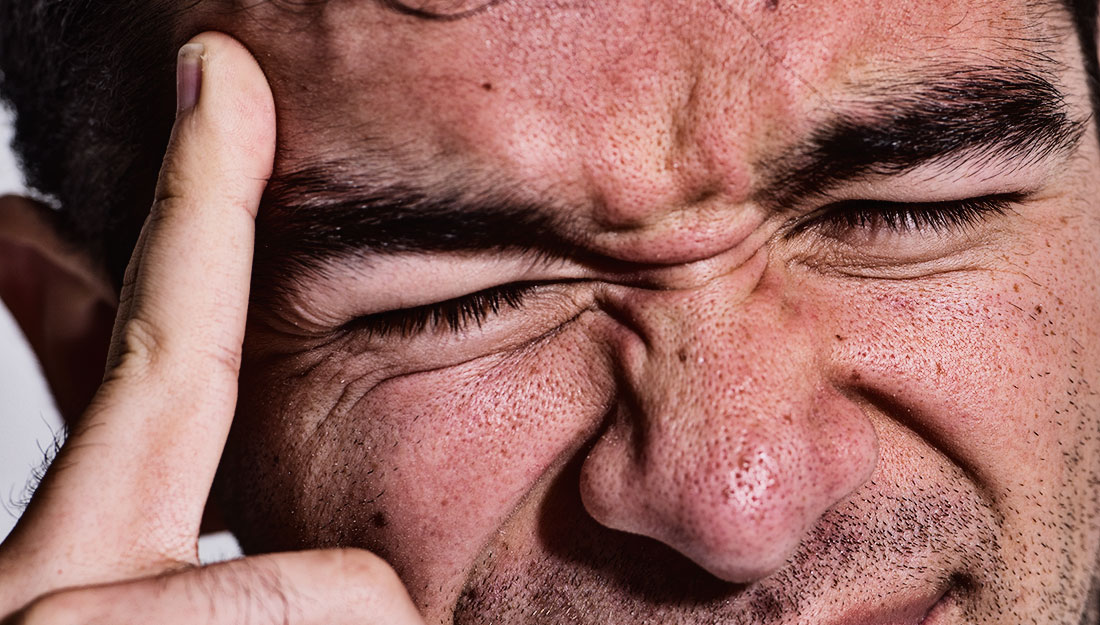- Lauren Thompson
- Dentistry, Healthy Living, Show on VR homepage, Trending
Common causes of daily headaches
There are more than 300 different types of headaches! Who knew?

It’s a tough workday and the stress is high. Suddenly, you’re hit with a dull throbbing that radiates across your head; all tasks halt abruptly as you clutch your face in your hands, taking deep breaths and hoping the pain will subside. Chances are, you’ve been here before. Headaches can be an unwelcome event no matter what stage or season of life you’re in.
First things first, headaches are classified into two categories: Primary and secondary. At least 90 percent of headaches are classified as primary, which means they occur without an underlying cause. Migraines, tension type headaches and cluster headaches are all considered primary. Secondary headaches are those induced by trauma, infections of the brain or central nervous system, TMD (temporomandibular joint disorder), or sinus issues. Less than 10 percent of headaches fall into the secondary classification.
“There are more than 300 different types of headaches altogether, categorized by their differences in location, pain severity and intensity, duration and whether they hinder daily life,” said Steven Bender, DDS, director of the Center for Facial Pain and Sleep Medicine, and clinical assistant professor at Texas A&M University Baylor College of Dentistry. “The majority of daily headaches fall into the primary category, and many people will suffer from several different types of these headaches presenting together.”
Tension, migraine or cluster: What’s worse?
Bender explained tension type headaches are the most common, followed by migraines and cluster headaches. Most of the time, a tension headache will involve both sides of the head and the pain can vary, but it’s usually mild to moderate. “Tension headaches can last for a short period of time or go on for days,” Bender said.
Pain from a migraine will be more intense and involve a specific location. “A migraine is usually localized to one side of the head,” Bender said. “The pain ranges from a moderate, dull throbbing to sharp and severe, and can be accompanied by feelings of nausea and vomiting.”
Most migraines last between four and 72 hours and may incapacitate a person to the point where they stop activities and must lie down. Sensitivity to light and sounds, dizziness and malaise are also symptoms associated with a migraine.
If you thought migraines sound bad, a cluster headache will be even worse. Cluster headaches are aptly named, since they present in bursts or cluster periods that last from weeks to months, followed by periods of relief. According to Bender, the pain reported by patients is the most significant when experiencing a cluster headache. “These are often called ‘suicide headaches’ because they induce so much pain,” he said.
Do headaches run in the family?
You might be surprised to know that most headaches occur because we have a genetic predisposition to head pain. The brain filters through tons of sensory information on a daily basis, and it protects us by filtering out certain stimuli.
“When this mechanism doesn’t work properly, it could explain why some people are more prone to headaches,” Bender said. “This means it takes less and less stimuli for structures in the brain to get excited and cause head pain. Our already sensitive brain has essentially become more sensitized.”
Scientists have even identified a genetic marker for a specific type of migraine, attributed to a disruption in the genetic sequence. “It is possible to have a family history of migraines,” Bender said. “At least 70 percent of people who suffer from migraines have relatives with the same condition.”
Are lifestyle choices to blame?
Our environment, lifestyle choices and even our diet all factor into what type of headaches may occur, and when. High stress, erratic sleep patterns, snoring, sleep apnea, caffeine overuse and certain foods can all trigger headaches—ranging from moderate to severe.
“Stress, of course, is a culprit. Skipping or missing meals will leave you more prone to developing headaches,” Bender said. “Certain foods and food additives can make a person respond negatively. Red wine is thought to be a prominent headache trigger along with processed meats and cheeses, chocolate and caffeine. We still don’t fully understand why these foods can cause headaches.”
Bender noted lifestyle choices also play a part. “It’s important we work on behavioral aspects like daily exercise, good nutrition and regular sleep times,” he said. “People tend to get migraines on the weekends because they sleep in. When we alter our sleep patterns, we increase our migraine and headache risk. Poor diet decisions are a large indicator, and as obesity rises, so will the susceptibility for health conditions like headaches.”
What are the treatment options?
According to Bender, most health care providers will use daily preventative medications to treat chronic headaches only as a last resort. However, tension headaches that occur less frequently can be treated with over-the-counter pain relievers. “It’s easier to make lifestyle modifications and avoid certain triggers if you know what they are,” he said. “I always encourage patients to set regular sleep times—even on the weekends.”
Eating healthy meals at regular times and reducing stress by participating in activities like meditation, yoga and exercise will help alleviate most headaches woes. “As a society, we need to get up and be moving,” Bender said. “We always try to use preventive methods—lifestyle changes—first before trying other methods like medications.”
If your headaches move from episodic (occasionally) to chronic, and lifestyle changes aren’t relieving the pain, your physician may prescribe medication. “The appropriate medicine for headaches relies largely on identifying the headache type,” Bender continued. “In the last few years, we’ve been able to improve our methods of targeting headaches. Because of this, the chances of it coming back or staying have decreased. We can treat them effectively from the start.”
Media contact: media@tamu.edu


